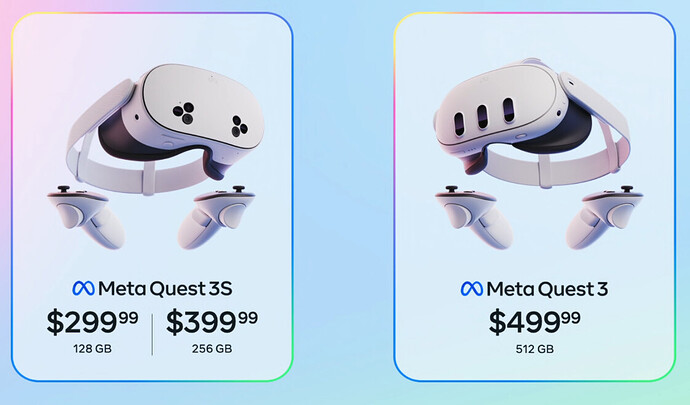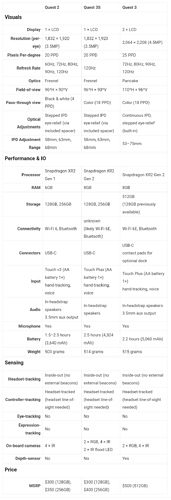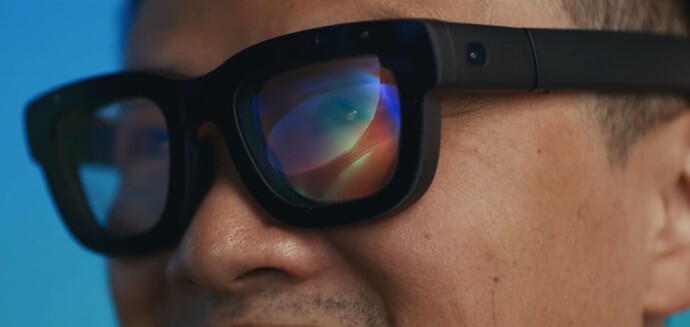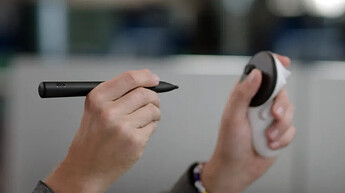As rumoured, the 3S was launched during Meta Connect:
Pre-orders open now, ships october 15. Interesting price point. Wondering how it compares to the regular Quest 3 in feeling. RoadToVR has a nice comparison table:
Compared to Quest 3:
- Fresnel lenses instead of pancakes
- Lower display resolution (3.5MP instead of 4.5MP)
- Lower FOV (H 96 instead of 110)
- No depth sensor
- Stepped IPD
- A lot less storage
- Same XR2 Gen 2 chipset, same passthrough resolution, same weight
Some other things from the Meta Connect keynote:
- Look at a Windows 11 system while wearing a Quest and it will mirror the screen in VR (I would expect Apple to have patented that, but okay)
- Photorealistic spaces coming, “Hyperscape”. Use phone to scan a room and view in VR. Looks really good, probably Gaussian Splatting based. Can run Quest 3 and 3S, standalone. Horizon Hyperscape beta app (US only).
And apart from some Ray-Ban glass updates (with a really cool transparent frame limited edition), the Orion holographic AR prototype took the stage.
- Orion, fully-functioning prototype, 100g weight
- Holographic display, wide FOV (70 degrees)
- See-through optics wave-guide, not passthrough
- Custom silicon and sensors
- Voice and AI interaction. Hand and eye tracking.
- Has wrist-based neural interface
- See https://www.facebook.com/MetaforDevelopers/videos/449444780818091 from around 1:18:00
- By the way, CEO of NVIDIA is one of the folks whose reaction is filmed while wearing them around 1:24:00 (grey hair, leather jacket)
- Displays need more sharpness. Glasses smaller form-factor. More affordable production.
- For now an internal development kit, and for a few external partners.
- “Next version to be first consumer holographic AR glasses”
So, this is really cool. If they really pull this off technically I strongly belief this will be the next big thing





